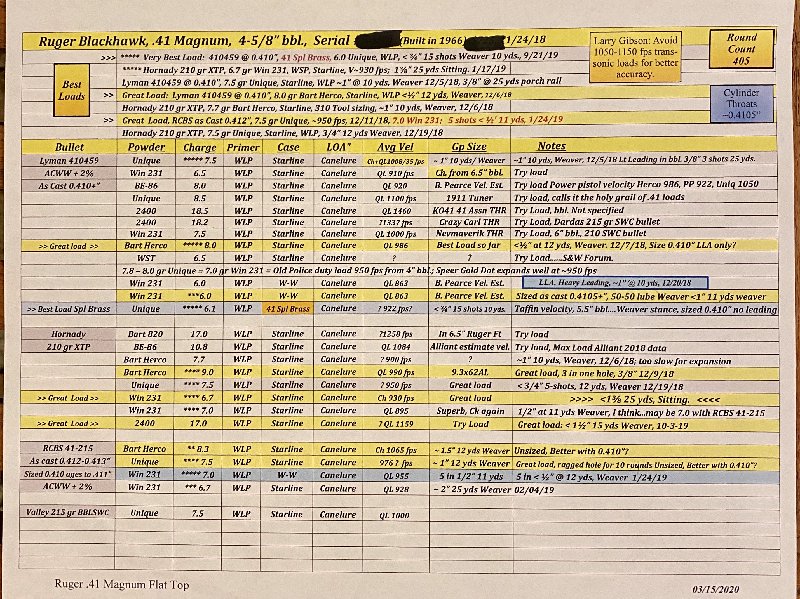Aguila Blanca
Staff
I am looking for suggestions regarding how to keep track of my reloading recipes. For a good many years I only loaded .45 ACP (230-grain) and 9mm (115 grain). That was easy to keep track of.
I'm now branching out into different loads within those two "calibers," as well as other handgun calibers. And I expect to dip my toe into bottleneck rifle fairly soon. I need a better way to keep this information sorted out. At the moment, I have a single-page worksheet in Excel. It has the data, but it's going to be a nuisance to sort as I add more loads and more calibers/cartridges.
One possibility would be separate worksheets for each chambering within the overall "Reloading Data" workbook. But I'm also considering trying to convert it into an Access or Libre Office Base database.
How do you more experienced reloaders keep track of your load data?
I'm now branching out into different loads within those two "calibers," as well as other handgun calibers. And I expect to dip my toe into bottleneck rifle fairly soon. I need a better way to keep this information sorted out. At the moment, I have a single-page worksheet in Excel. It has the data, but it's going to be a nuisance to sort as I add more loads and more calibers/cartridges.
One possibility would be separate worksheets for each chambering within the overall "Reloading Data" workbook. But I'm also considering trying to convert it into an Access or Libre Office Base database.
How do you more experienced reloaders keep track of your load data?

